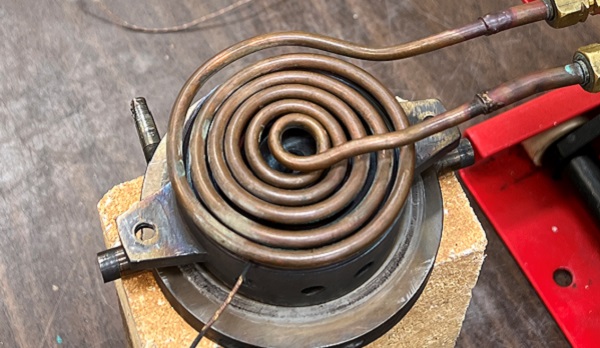Induction Forging Steel Rods to Stamp Saw Blade Handles
When it comes to many manufacturing processes, including this forging application, precision and efficiency are critical. Traditional heating methods...
Processes
Processes: More
Processes: More

Industries:
Industries: More
Industries: More
Industries: More

Products:
Products: More
Services:
Services: More

Learn:
Learn: More
About:


A manufacturer of plastic filtration devices came to THE LAB at Ambrell to see if induction might be a more efficient heating method for their application than their oven. They had been heating steel assemblies in about fifteen minutes and wanted to reduce the heating time. THE LAB determined that an Ambrell EASYHEAT 2.4 kW induction heating system and a pancake coil would be the right solution for their application.
Initial tests were conducted to optimize the power delivered to the steel assembly. Temperature indicating paints were used to determine the heating time. It took seven minutes to heat the sample to temperature, easily exceeding the client’s goal.
Induction offered many benefits to the client and their application. The speed advantage is obvious, and additionally there is no ramp-up time with induction. Induction heating systems take up less room than an oven, making them a good solution for any manufacturing floor that is tight on space. Induction is also more energy efficient as it only heats the portion of the part that requires it. Finally, it is highly repeatable, so the client can expect the same result time after time.
To read other application notes from THE LAB at Ambrell, visit our heating applications page. If your process might benefit from induction heating, be sure to take advantage of free induction heating applications testing from our expert application engineers in THE LAB.

When it comes to many manufacturing processes, including this forging application, precision and efficiency are critical. Traditional heating methods...

The busy fall tradeshow schedule continues, with Ambrell set to exhibit at two more events next week: WESTEC 2025 in Anaheim, CA and The Battery Show...

Toronto, ON | September 29 – October 2, 2025